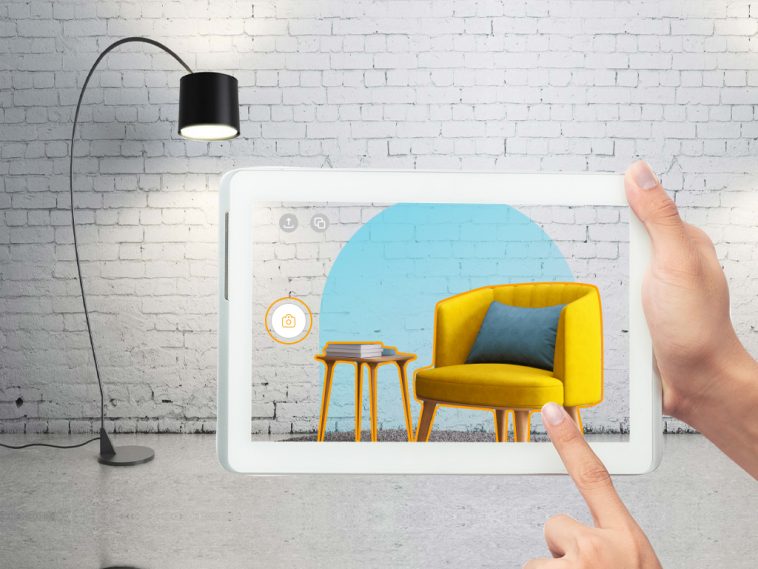The use of technology in businesses has been growing at an exponential rate, and Augmented Reality (AR) is one such technology that has the potential to revolutionize the way companies operate. AR blends the physical and digital worlds, creating an extraordinary experience, more engaging and appealing. Augmented reality in business is an ideal tool to transform traditional workflow into a modern-day version that improves metrics.
AR creates a more interactive and engaging user experience, which businesses can leverage to achieve their goals.
Benefits of Augmented Reality in Business Operations
The benefits of Augmented Reality (AR) in business operations are numerous and can significantly impact a company’s success. By leveraging AR’s interactive and immersive nature, businesses can streamline operations, reduce costs, and improve the overall customer experience. Whether through virtual try-ons in retail, real-time information in maintenance and repair, or visualization in architecture and construction, AR can revolutionize how businesses operate and drive growth.
1. Improved Training and Onboarding
One of the biggest challenges for businesses is training and onboarding employees efficiently and effectively. AR can help enterprises overcome this challenge by providing interactive and immersive employee training experiences. For example, in industries such as manufacturing or construction, AR can be used to train employees on complex machinery or procedures in a safe and controlled environment without the need for physical prototypes or equipment. This reduces the risk of accidents and equipment damage and speeds up the training process, allowing employees to start contributing to the business more quickly. Additionally, the interactive nature of AR training can make it easier for employees to retain information and improve their understanding of complex concepts.
2. Enhanced Customer Experience
AR elevates customer experience with an interactive and engaging experience. For example, retailers can use AR to give their online customers virtual try-ons of clothing or cosmetics, helping them make more informed purchasing decisions. With the traditional method, the customers are often unsure about their decision when purchasing products online. This leads to increased product returns on delivery. AR experience can precisely solve this issue for modern-day retailers.
3. Increased Productivity
AR can help improve the productivity of its workforce and ensure an efficient workflow with real-time information and data to employees in their line of work. For example, in the field of maintenance and repair, AR can provide technicians with real-time information and instructions, reducing downtime and increasing the speed of repairs. By overlaying digital information onto physical equipment, technicians can quickly and easily identify and diagnose problems, reducing the need for trial and error and increasing overall productivity. AR can also provide technicians with real-time updates and feedback on their work, allowing them to make corrections and improvements on the spot, further increasing efficiency and productivity.
4. Improved Collaboration
AR can also improve collaboration among the workforce. For example, in the architecture, engineering, and construction industry, AR can visualize and collaborate on building designs and layouts in real-time, reducing the need for physical prototypes and saving time and resources. By allowing multiple stakeholders to see and interact with virtual building designs, businesses can reduce the need for physical meetings and improve communication between team members.
Examples of Augmented Reality in Business Operations
The potential of Augmented Reality (AR) in business operations can be seen in numerous real-world examples. These examples showcase the versatility and power of AR in improving processes and enhancing the customer experience. By examining these successful implementations of AR, businesses can get a glimpse into the potential of this technology and how it can drive growth and success.
1. IKEA
IKEA, the furniture retailer, has been using AR for several years to enhance the customer experience. Customers can use the IKEA app virtually to see products in their space. This helps customers make more informed purchasing decisions and reduces the number of returns and exchanges, saving time and resources for the company.
2. Daqri
Daqri, an AR company, provides businesses with industrial AR solutions to improve operations and efficiency. Their AR solutions are used in manufacturing, construction, and maintenance industries to provide real-time information and guidance to employees in the field. By providing real-time data and advice, businesses can reduce downtime and increase productivity, improving overall operations. Additionally, Daqri’s AR solutions offer real-time updates and feedback to employees, allowing them to make corrections and improvements on the spot, further increasing efficiency.
By providing interactive and immersive experiences, AR can improve training and onboarding, enhance customer experience, increase efficiency and productivity, and improve collaboration and communication. Companies that embrace AR as a tool to improve operations and enhance the customer experience will have a competitive advantage over those that do not. Today, it is easy to integrate especially with no-code AR creator platforms like PlugXR, significantly reducing expenditure on development cost.




